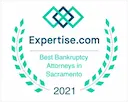Financial stress leads people to look for ways to deal with overwhelming debt. Two of the most common solutions are bankruptcy and debt settlement. According to the Consumer Financial Protection Bureau (CFPB)— you need to understand the financial, emotional and legal implications of each. If you are struggling to pay your debt you’re not alone. Many people find themselves choosing between bankruptcy and debt settlement to get back on track.
In this article, we’ll help you explore both options using CFPB and other trusted sources so you can make an informed decision about your future.
What Happens When You File for Bankruptcy?
According to CFPB— bankruptcy is a legal way to handle debt when it gets too big to handle. Think of it as a reset button for your finances, all overseen by a court to make sure it’s fair. Two types might help you:
- Chapter 7 Bankruptcy: This is like hitting the reset button. The court helps you wipe out most credit card and medical debt but you might have to sell some property to pay your creditors as much as you can.
- Chapter 13 Bankruptcy: This is like hitting the pause button. If you have regular income— you can work with the court to create a 3-5 year payment plan. You’ll likely keep your property while you catch up on payments at a pace you can handle.
How Common is Bankruptcy?
You’re not alone. According to the American Bankruptcy Institute’s 2023 report, over 370,000 Americans filed for bankruptcy, with 6 out of 10 choosing Chapter 7. These numbers prove many people— just like you have used bankruptcy to start fresh.
What Are The Benefits Of Bankruptcy?
The Consumer Financial Protection Bureau (CFPB) says three big advantages will give you a fresh start. Here’s what you can expect:
- As soon as you file for bankruptcy, creditors have to stop calling you and you get instant relief. They can’t garnish your wages or foreclose on your home. Many people tell us this alone helps them sleep better at night.
- Bankruptcy lets you pay off most of your debts completely. Think of it as hitting the reset button on your finances. Credit cards and medical bills can be wiped out and you can start over.
- You’ll have legal support throughout the process. The court looks out for you and makes sure everything is fair. So you won’t have to face creditors alone – there’s a whole system in place to protect you.
What are the drawbacks of bankruptcy?
Under federal bankruptcy law, there are three big considerations you should consider before you make a decision. Here’s what you need to know:
- Your credit score will be affected for several years. Chapter 7 bankruptcy stays on your credit report for up to 10 years and Chapter 13 for 7 years. This can make it harder to get loans, credit cards or even rent an apartment. But many people find this temporary inconvenience worth the fresh start.
- You may have to give up some property under Chapter 7. While you’ll keep the necessities for daily life, you may have to sell a second home or luxury items. The good news is most people can keep their basic possessions and primary residence.
- The emotional part can be tough but it’s temporary. Many people worry about feeling like they’ve failed but remember – financial hardship doesn’t define who you are. Think of this as a chapter in your book and not the whole book. You’re taking responsible steps to get better.
What is Debt Settlement and How Does it Work?
According to the Consumer Financial Protection Bureau (CFPB)— debt settlement means working with your creditors to pay less than what you owe. Many people hire debt settlement companies to do it for them but they charge fees for the service.
What to Expect?
American Fair Credit Council’s 2023 research shows great results: many people settled 30-50% of their debt. But be prepared - it takes 2-4 years and it’s not guaranteed.
What Are the Challenges of Debt Settlement?
The CFPB lists three major challenges you should consider before you decide on debt settlement. Here’s what you should be prepared for:
- Success is not guaranteed in this process. Your creditors have no obligation to accept your offers even after months of negotiating. Some people spend a lot of time trying to settle and find out their creditors won’t agree to reduce the debt.
- Creditors can continue to collect throughout the process. Unlike bankruptcy, debt settlement doesn’t stop creditors from calling you or taking legal action. This ongoing pressure can be stressful— especially since the settlement process can take several months or even years.
- The total cost may be more than you think. Debt settlement companies charge 15-25% of the settled debt. Plus— the IRS considers forgiven debt as taxable income so you may have to pay taxes on the amount written off. These additional costs can eat into how much you actually save.
Other Options to Consider
Before you decide on bankruptcy or debt settlement, consider three other options that might work better for you. Here’s what to look at:
- Talk to a credit counselor from a non-profit agency. These folks offer free help and will look at your situation in detail. They will work with you to create a plan that fits your needs and abilities. Many people find this helps them see options they never knew existed.
- You might benefit from debt consolidation—which simplifies your finances by combining all your debts into one loan with one monthly payment. If you can qualify— you might get a lower interest rate than what you are paying now. This could make your payments more manageable and save you money over time.
- Learning money management skills might be your best long-term solution. Many organizations offer free programs that teach practical budgeting and saving strategies. These skills not only help you with your current debt but also keep you financially healthy in the future. Think of it as building a foundation for permanent financial success.
How Much Will Each Option Cost You?
Before you decide— you need to know exactly what you will pay for each option. The CFPB recommends comparing both immediate and long-term costs to avoid surprises.
Starting Costs:
- Bankruptcy: According to the U.S. Bankruptcy Court fee schedule— you will pay $300-$400 in filing fees + $1,000-$3,500 in attorney fees. The more complex your case, the more it costs.
- Debt Settlement: As reported by the American Fair Credit Council— you will pay the settlement company 15-25% of your reduced debt. Be careful - your debt may grow during negotiations if you stop making payments.
How Will This Affect Your Credit Score?
According to federal credit reporting regulations, the impact on your credit will vary depending on which path you choose. Here’s what you can expect with each option:
- Bankruptcy will have a longer-term impact on your credit report. If you file Chapter 7— it will be on your report for 10 years; if you file Chapter 13— it will be 7 years. This long-term visibility will make it harder to get approved for loans, credit cards and even rental applications. However, many people find their credit scores start to improve once they start rebuilding their credit after bankruptcy.
- Debt settlement has a shorter-term impact on your credit. It’s on your report for 7 years but lenders view it more positively than bankruptcy because it shows you paid part of your debt. This makes it easier to rebuild your credit sooner.
How Much Debt Can You Get Rid Of?
The CFPB and American Fair Credit Council tell us how much debt relief we can expect with each option. Here’s what their numbers show:
- Bankruptcy gives you the most debt relief. You can get rid of most unsecured debt – credit cards, medical bills, personal loans – entirely. Think of this as a complete do-over financially.
- Debt settlement gives you partial debt relief. You might be able to get 30-50% of your debt reduced but it’s all up to your creditors to negotiate. Keep in mind not all debt can be settled and some creditors won’t even talk to you.
How Each Choice Affects You
The Emotional Bankruptcy Process
Filing for bankruptcy isn’t just about money - it’s an emotional experience, too. You might worry about what others think but many people tell us they feel a huge weight lifted off their shoulders once their debts are gone. Yes, it’s a public process but taking control of your financial future is brave - not weak.
What to Expect Emotionally with Debt Settlement
Debt settlement is private— which many people prefer. But be prepared for a longer journey. Dealing with ongoing creditor calls and unknown outcomes can be stressful. Having a good support system during this time really helps.
Mental Health Bonus
Here’s the good news: whatever you choose— most people feel better once they’re dealing with their debt. Just choose what works for you financially and mentally.
How Each Option Protects You Legally
Your Legal Safety Net with Bankruptcy
As soon as you file for bankruptcy—the law kicks in to protect you. Creditors have to stop calling and all collection activity has to be frozen. Think of it as a legal shield that gives you space to get your head back above water.
No more worrying about garnished wages or lawsuits. The court will protect you while you get back on your feet.
Legal Protection with Debt Settlement
- With debt settlement— you don’t have the same legal protection as bankruptcy. Creditors can still try to collect from you.
- Until you have a settlement agreement— creditors can still file lawsuits or garnish your wages. Be aware of this before you start.
Making Peace with Your Decision
You will hear different opinions on both options. Some people might think bankruptcy should be avoided at all costs and others see it as a tool for a fresh start. However, stopping payments with debt settlement feels uncomfortable but sometimes it’s necessary to get to a settlement.
Which One is Right for You?
Bankruptcy Might Be Your Answer If:
- You’re drowning in debt that’s way more than what you earn or own
- You’re facing scary situations like lawsuits, garnished wages or losing your home
- You can’t buy groceries or pay utilities after making minimum payments
- You need protection from creditors now
Debt Settlement Works Better If:
- You have some credit card or personal loan debt but it’s not out of control
- You have a steady job and can put aside some money each month
- You can gather a lump sum to offer creditors (like from savings or selling items)
- You want to handle your debt privately without going to court
Quick Tip: Think about your daily situation. If you are losing sleep over creditor calls and can’t make ends meet— bankruptcy’s immediate protection might be your best bet. But if you can still pay your bills and need help reducing your debt— debt settlement might be the way to go.
How to Rebuild Your Financial Life
Whether you’ve chosen bankruptcy or debt settlement— these steps will help you get back on track. Here’s how:
Getting Back on Track After Bankruptcy
Recovery from bankruptcy involves four simple steps to help you rebuild. Here’s what the experts say:
- Start rebuilding credit with a secured credit card. Many banks have these cards designed for recovery. You will need to put down a deposit but that becomes your credit line and helps you establish good credit history.
- Pay every single payment on time—with no exceptions. Payment history is a big part of your credit score— so this is your chance to prove to lenders that you are reliable. Set up automatic payments so you never miss a due date.
- Create a realistic budget and stick to it and if possible, track your monthly income and expenses and look for ways to cut unnecessary spending. This will prevent future financial problems and show you are serious about managing money.
- Use free credit monitoring to track your progress. Many websites offer this for free— so you can see your score improve over time. This will help you stay on track.
Rebuilding After Debt Settlement
After you have settled your debts—you will want to focus on 4 key steps to rebuild your financial foundation. Here’s your road map:
- Stay committed to paying your remaining debts according to your new agreements. Each on-time payment helps rebuild your creditworthiness. Set up payment reminders or auto payments so you never miss a due date. This consistent payment history shows lenders you mean business.
- Keep records of all your settled debts and payments. Save all settlement agreements, payment confirmations and correspondence with creditors. Having this paper trail protects you from future collection attempts and helps you track your progress. Many people find that organizing these documents in a folder gives them peace of mind.
- Check your credit report and take action if you see any errors. You are entitled to free credit reports from each major bureau annually. Review them carefully and dispute any inaccuracies about your settled debts. This will ensure your credit report reflects your debt settlement progress.
- Build an emergency fund to protect yourself from future debt. Start small— even $25 a paycheck and increase over time. Having this financial cushion will prevent you from going to credit cards when unexpected expenses arise. Many financial advisors recommend 3-6 months of living expenses as a long-term goal.
Other Options to Consider
Before you decide on bankruptcy or debt settlement, try these three other options first. Here’s what to consider:
- Talk to a credit counselor from a non-profit agency. These folks offer free expert help and will look at your situation in detail. They’ll work with you to create a customized plan for you. Many people find this expert helps reveal options they never knew existed.
- You might benefit from debt consolidation which combines all your debt into one loan with one payment. If you qualify, you could get a lower interest rate than what you’re paying now. This could make your payments more manageable and save you money in the long run.
- Taking the time to learn money management skills might be your best long-term solution. Many organizations offer free programs that teach practical budgeting and saving strategies. These skills will help you with your current debt and keep you financially healthy in the future. Think of it as building a foundation for financial success.
| Key Comparisons: Bankruptcy vs. Debt Settlement | ||
|---|---|---|
| Aspect | Bankruptcy | Debt Settlement |
| Cost | $1,000–$3,500 | 15–25% of settled debt |
| Debt Relief | Broad (most unsecured debts) | Limited (depends on negotiations) |
| Credit Impact | Severe (7–10 years) | Moderate (up to 7 years) |
| Time to Resolve | 3–6 months (Chapter 7) | 1–3 years |
| Legal Protections | Automatic stay against creditors | None |
| Emotional Toll | High (stigma, perceived failure) | Prolonged stress during process |
Bottom Line
You’re already showing guts by looking into your options. Whether you choose bankruptcy or debt settlement, remember many others have gone before you and made it out the other side.
Bankruptcy gives you a fresh start with strong legal protections, though it will ding your credit score longer. Debt settlement can get you out of court and debt faster, but you’ll need to wait during negotiations.
What’s best for you will depend on your situation. Consider how much debt you have, your income and expenses now, how quickly you need relief and what matters most to your sanity.









